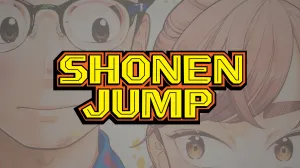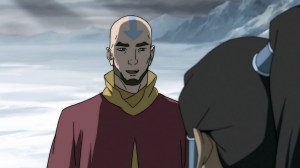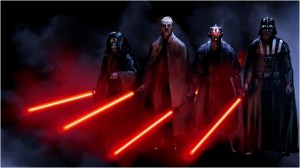Acclaimed comic book writer/artist/publisher Todd McFarlane loves a good sports metaphor — he was once co-owner of the Edmonton Oilers and built a toy empire on athlete action figures, after all. So when asked what it feels like to see a character he had a major hand in creating, Venom, emerge as the star of one of the top-grossing films of the past year, he offers an analogy rooted in professional sports.
Videos by ComicBook.com
“If you’ve ever watched a baseball game or something where you see somebody making their major league debut, then they flash to the parents and the family, and parents and the family are so proud, but ultimately, the kid on the field has to basically perform, right?” McFarlane explains. “And mom and dad, they’ve done as good as they can, but they don’t have any input at that point. They’re just proud parents, and it’s time to let the baby go and see if it can stand on its own. Essentially, in a weird way, metaphorically speaking, it’s the same thing with Venom to me.”
McFarlane was able reflect on the emergence of Venom – whom he first illustrated as a monstrous incarnation of Spider-Man’s black-and-white alien symbiote costume inhabited by Peter Parker’s rival Eddie Brock back in 1988, in concert with writer David Michelinie – following the smash success of Sony Pictures solo film Venom featuring Tom Hardy as the ravenous antihero, which stands among the year’s top 10 money-making films and is now available for digital download as well as on Blu-ray.
“This character’s been around now for 30 years – it’s grown up,” says McFarlane. “It’s had a lot of creative iterations. It’s had different looks, visually, it’s had different stories. Is he good? Is he bad? Is he halfway in between?” He says the screen iteration has breathed a stronger gust of life into his co-creation, long considered one of greatest comic book villains of all time. “This voice we’ve had in our head reading comic books now has to have a [real] voice, so everybody now has to give another layer to it, and then it goes out to the world,. And now it’s pushing a billion dollars, and you’re just going, “Oh my gosh!’ But I didn’t have anything to do with the homerun my son just hit.”
Indeed, in deference to the filmmakers as well of the many creative hands that have contributed to Venom’s mystique and mythology over the years, McFarlane resists claiming too much credit for Venom’s Hollywood success. “I was there at the beginning, and I helped encourage him a little bit at the beginning, gave him a good start, everybody else sort of helped him along the way and raised him, and now, you just stand back and you just, with a smile on your face. ‘Go – go get them!’”

He’s impressed how the film delivered a successful take on the character without including famous foils Spider-Man or Carnage while reconceiving an origin story, and he looks forward to seeing what Sony comes up with for a sequel now that the film version can move beyond any table-setting storytelling baggage.
“I assume Sony’s going to do a sequel – and if they don’t, you and I will buy the rights, and we’ll do it ourselves,” he laughs. “They’re going to hit the second movie with Venom being Venom on minute one: as soon as the credits are over, the opening credits, there’s a Venom, and they don’t have to waste 45 minutes getting to Venom. So now, if I’m a fan of Venom, I’m going to get two hours of Venom…[Sony’s] got no place to go but up on this thing, right? This thing’s just going to get bigger, and cooler, and fun as we go. We’ve got eight to ten years staring us in the face right now because there is just so many possibilities, and we’re just getting warmed up.”
From the very beginning, there was something uniquely and essentially right about the way in which McFarlane re-worked the symbiote suit into a villainous entity in its own right in the comics, and he remembers his initial tinkering with the design, which came about because of his desire to draw Spider-Man in his traditional web-slinging suit when he came aboard Marvel’s flagship title as artist.
“The costume pre-existed, and the costume was on Spider-Man – it’s really the reason why Venom exists, because I didn’t want to draw the black costume on Peter Parker. If I had been a normal employee instead of being this renegade, I would have gone, ‘Yeah, I’ll draw the black costume for the next five years,’” he chuckles. “But because I said, ‘I’m not going to take over Spider-Man unless we get rid of the black costume,’ because Peter Parker should be in a red-and-blue costume, because that’s my geek talking and that’s what I wanted to draw, and they went, ‘OK.’”
But, according to McFarlane, neither Marvel’s editorial team nor he wanted to completely banish the black costume, which had been well received since its debut in 1984. “I go, ‘This is easy: take the costume off Peter Parker; put it on another person,’” he says. “I wanted to do a monster, right? So, one of the reasons I think that Venom did work is because I never underestimated cool.” Venom, he says, arrived with an inherent cool factor that played similarly to Marvel’s then emerging stalwarts Wolverine and The Punisher — “These characters that don’t mind breaking the rules, I think they’re kind of charming in a weird way, which is why I think we actually kind of like some of these big badass villains…They don’t care, and they make no apologies.”

The combination of look and attitude, he says, “it can actually go a fair distance,” and fuel the imaginations of more creators who take on the character. Three decades later, he simply marvels, no pun intended, at how far Venom’s gone.
“I had the great pleasure of having a friendship with Stan Lee for three decades,” he explains. “In private, on multiple occasions, Stan would say the same thing. After a convention or after a premiere, when I was with him on the way to the airport, he would go ‘Todd, can you believe it? Can you believe what’s going on? This is all amazing. Who would have thunk? It’s just crazy!’ And he would say it with a smile on his face, because even he, who created dozens of these characters, was, ‘Who would have thought that it would have gotten this big?’ and ‘Wow, what a ride!’”
McFarlane admits he hopes that Venom’s success on a broader pop cultural platform bodes well for the Hollywood fortunes of his other significant comic book creation, Spawn. He’s made no secret of his intention to direct a Spawn film himself from a screenplay he wrote in recent years. “Somewhere along the line, maybe I can use some of that success to maybe help me get [the] Spawn movie off the ground,” he offers.
He reveals that he’s still in an arduous and painfully slow process of assembling the financing and finding a studio to partner with. “[I’m] trying to convince the studios I know that there’s a regular formula for superheroes and superhero movies, and it’s usually in that Iron Man, Spider-Man, Avengers sort of world, but you can break outside of that.”
McFarlane says he’s trying to argue that the film studios “don’t understand how big geekdom and how loyal geekdom is, because every time you go outside of your normal comfort zone bubble of superheroes, it works. So go goofy: do Guardians of the Galaxy. Go R-rated goofy: there goes Deadpool. Go serious: boom, there goes Logan. Go antihero – ‘Oh, we can’t go antihero!’ Boom, there’s a billion-dollar thing called Venom.”

“Why can’t Spawn go in one of those corners?” he asks.”Which is the corner over to the left, which is called dark, R-rated, scary, serious film. That’s it. Under the umbrella of superhero movies.”
He knows that directing the film himself is yet another hurdle he’ll have to clear – though as the sole owner of the rights, he can certainly make it a sticking point. “Part of it is just I’ve directed the movie a thousand times in my head,” he says, “So by the time I explain it to anybody, I could just film it. And part of it is that there’s a lot of subtlety, and nuance, and visuals that are not in the script that would be too hard to describe to somebody else. So it’d just be easier, and faster, and efficient for me to just do it myself.”
He also thinks he’s built a film structure and budget contained enough that would allow a studio to feel comfortable and less risk-exposed with Spawn in the hands of a first-time director.
“I wrote a story that I thought was tight enough and small enough, and the budget would be reasonable enough that it’s not like I’m asking for $100 million,” he says. “I’m smart enough as a CEO of decades and an artist to now go, ‘OK – I’m going to be the weak link, so let’s go and get people like [producer] Jason Blum and [special effects filmmaker] Greg Nicotero, an award-winning costume designer, and let’s go get Jeremy Renner, let’s go get Jamie Foxx, and let’s go get an award-winning cinematographer, and let’s go get an award-winning editor, and then put together a whole crew, and go get ever better casting, and all of a sudden you look at it and you go, ‘Wow, the weak link is Todd.’”
“If you take that mentality, here’s what ends up happening: you can get something that looks pretty and at least feels like a movie,” he continues. “Why? Because I just saw it. It’s called A Star Is Born. There is a first-time director on that movie, and it doesn’t look like it because Bradley Cooper – besides being a very smart man, and a multi-talented person – was also equally intelligent to put really creative people and smart vets around him to pull off that movie. It looks like a ten-year vet shot that movie, right? So I’m going to do the exact same thing. Get smart people and just stand back and go, ‘Thanks for making me look good every day.’”








